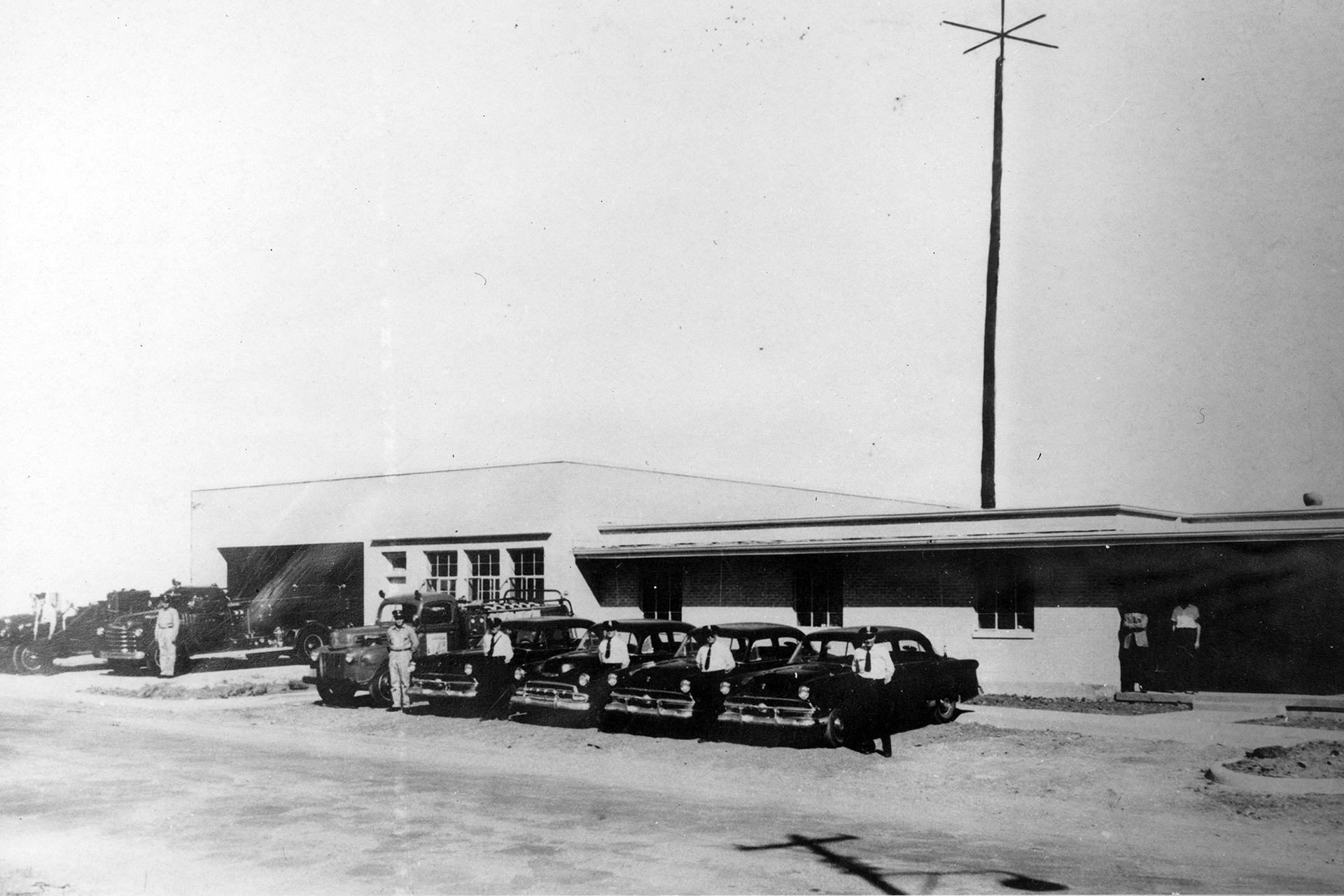
History of the Arlington Police Department (Part 1 of 2)
The City of Arlington, Texas was chartered April 19, 1884. In its early years, many interesting, sad, and often humorous events took place with respect to its law enforcement. During the first 40 years, from 1894 until 1934, there was a succession of 22 marshals and police chiefs. The year 1934 was pivotal in the history of the Department, as will be discussed later.
Early History
The first record of a law enforcement agency in Arlington was in 1894 with the appointment of W.M. Douglass as city marshal. In 1900, according to ordinances #25 and #28, the marshal also served as the tax collector and city engineer. On February 13, 1908 the fire chief and the assistant fire chief were appointed to serve as policemen as well as firemen. In 1908 the city council bought two bloodhounds for the city marshal. Someone shot and killed one of them on September 10, 1910. The first speed limit was established at 10 mph on November 23, 1911. The next year, on February 12, 1912, the city purchased its first motorcycle, an Indian Twin Cycle – 7 horsepower, for $290.
On November 14, 1912, the office of city marshal was abolished. However, it was reinstated December 12th of the same year. On July 3, 1914, Mrs. Carrie C. Rogers was appointed city marshal by Mayor P. F. McKee. Her salary was $5.00 a month. She was relieved of her duties September 10, 1914 (for reasons unknown). The motorcycle that was purchased in 1912 was traded for a horse and buggy on December 8, 1915 (because it proved to be more reliable?). The title of marshal was changed to police chief with the appointment of Pearl Rudd, August 2, 1915.
1934 - A Pivotal Year
Although no one was aware of it at the time, the history of the Arlington Police Department was about to begin dramatic changes with the hiring of A.B. “Ott” Cribbs as a police officer on May 17, 1926. He was appointed police chief April 17, 1934, a position he held for the next 37 years. Citizens raised $450 to send Chief Cribbs to the FBI Academy on August 8, 1940. He retired in 1971. Only five police chiefs have served the Arlington Police Department since 1934:
A.B. “Ott” Cribbs, April 17, 1934 - 1971
Herman Perry, Feb. 1, 1971 - 1983
Roy Ables, Oct. 1, 1983 - 1985
David Kunkle, Jan. 14, 1985 – 1999*
Theron Bowman, March 9, 1999 – Present
*David Kunkle left to become Arlington Assistant City Manager. He left that position to become the Dallas Police Chief, and retired from that position in 2010.
The Arlington Police Department has a history of being on the cutting-edge of law enforcement. In 1938 Chief Cribbs brought the latest in police technology to Arlington, when he purchased the state’s first Drunk-O-Meter. It cost $87.50. The Drunk-O-Meter was an early device used to determine if a driver was intoxicated. An article in the September 1938 Arlington Journal stated that, “Arlington was recognized for this advancement and capitalized on the purchase as an enforcement tool and educational aide.” Shortly after Arlington made the purchase, the Dallas Police Department followed suit.
The first traffic signal light was installed in 1933 at Division Street (the Bankhead Highway) and Center Street. The police department abandoned the policy of buying police uniforms on May 2, 1933, but several years later resumed the policy. In 1941 the city council passed an ordinance permitting police officers to make arrests without warrants. Arlington police cars were equipped with radios after the state highway patrol radio station was installed on East Abram Street February 19, 1945.
In the early 1950s, two highway patrol officers, Claude Reeves and Rufus Taylor, began an auxiliary police unit. The auxiliary officers were not allowed to wear police uniforms or carry guns. Their only identification was a 4-inch-wide blue armband with the word “POLICE” stitched on it in white. Later, when their services were needed, they were issued a badge by Chief Cribbs that read, “Arlington, Texas Special Officer.” Chief Ott Cribbs became concerned that one of them would get hurt because they were not allowed to carry guns, so in 1954 he changed it from an auxiliary unit to a reserve police unit. Although they were authorized to carry weapons, they received little or no formal training.
In September 1968, Lieutenant Roy Ables was certified as a police firearms instructor, and shortly thereafter began conducting firearms training classes for the reserve officers. In 1970 Lieutenant Ables and Sergeant Don “Red” Martin began the first school for reserve officers. In early 1972, Lieutenant Ables drafted a proposed curriculum for a reserve police academy to meet the requirements of legislation pertaining to reserve officer training. It was approved by the Commission on Law Enforcement Standards and Education. Lieutenant Ables served as coordinator for the reserve academy, and on May 18, 1972, the Arlington Police Department awarded him the Distinguished Service Award for that achievement.
